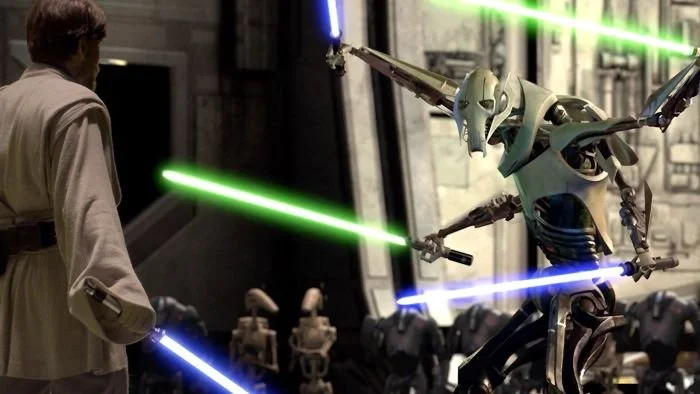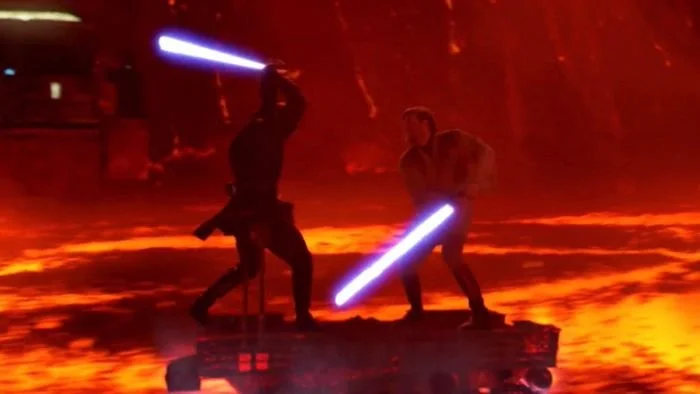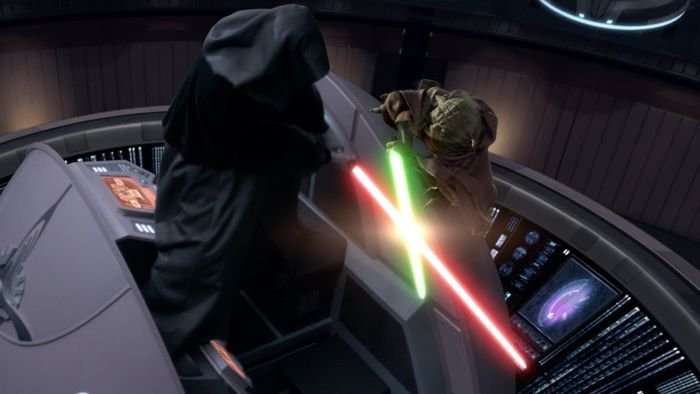Reasons Why ‘Star Wars: Revenge of the Sith’ Was Good (And Why It Wasn't)
When it first came out in theaters in 2005, Star Wars: Episode III - Revenge of the Sith made some people very happy and others disappointed. In some respects, the prequel trilogy did not live up to the expectations. In many ways, it was exciting, emotional, and fun to watch. Revenge of the Sith was no different.
Hello, World!
The movie quickly opened with Obi-Wan and Anakin, the two Jedi generals from the Clone Wars, flying into the war zone to save the Supreme Chancellor from certain capture. It had intense action and fight scenes like General Grievous being bested by Obi-Wan Kenobi, Mace Windu clashing with Darth Sidious himself, and Anakin destroying the Jedi in the Jedi Temple with the 501st units that were not with Ahsoka on Mandalore. Despite being a decent conclusion to the prequel trilogy, there were some things that were not so good. Let’s take a look at the strengths and the shortcomings of the movie.
RELATED:
What Was Good: Lightsaber Duels
The movie began with the epic rematch between Count Dooku and Obi-Wan Kenobi and Anakin Skywalker. You also have the Dark Lord of the Sith secretly watching the fate of the galaxy being decided and his plan falling into place. If Anakin had won, Dookue would die and Anakin would become his new apprentice. If Dooku had won, then Anakin would not have mattered to Sidious. Knowing this added so much weight to Anakin’s decision to cut off Dooku’s head.
Fast forward a little and you see Obi-Wan Kenobi duel General Grevious. The cyborg pulled out four lightsabers and fought with four arms. The master duelist Kenobi bested him, then finished him off with an “uncivilized” weapon. The Clone Wars was seemingly over. Little did Kenobi know that his accomplishment would set off a chain reaction where Anakin informed Windu of Palpatine being the Dark Lord of the Sith, and Windu going to arrest Palpatine. Then, we saw the true power of Darth Sidious as he easily killed all the Jedi Masters until he seemingly lost to Windu. It was at this point that Anakin decided to side with Sidious to learn the power of the dark side in order to save Padme. He betrayed Windu, fell to the dark side, and became Darth Vader.
As the devastation of Order 66 began, the movie ended with two epic duels. The first was between Jedi Master Yoda and Sith Lord Darth Sidious was epic. After easily dealing with the guards, Yoda dueled the Sith Lord with his words. Then, the fast-paced lightsaber combat followed, flowing into a duel with Force powers.
At the same time across the galaxy, Anakin Skywalker aka. Darth Vader was having a fight to the death against Obi-Wan Kenobi. Their duel was an epic mixture of fast acrobatics against the backdrop of burning lava. The crazy scenery along with the perfect soundtrack provided by John Williams made it arguably the most outstanding lightsaber duel in all of Star Wars.
What Was Good: Tying Up Loose Ends
There were plenty of unanswered questions after the original trilogy. Why was Darth Vader so deformed and “more machine than man.” How did Vader not know that Luke and Leia were his children and why did he not know where they were? Why did Luke and Leia not know that they were brother and sister? Why was Luke with Uncle Owen and Beru and how were they related to both Luke and Vader? There were also vague details surrounding the Clone Wars and Obi-Wan’s relationship with Anakin Skywalker. Episode III answered many of these questions that fans still had at the end of Episode VI.
True, in this movie you did not actually see Anakin fighting in the Clone Wars, but you did get a taste of it in how he handled Palapatinet’s rescue mission. The movie also showed how Anakin ultimately turned to the dark side. It also depicted the Sith plan for revenge, showing the details of how the two Sith lords destroyed the Jedi Order. While Disney had done a good job of further expanding on the Order 66 stories, even if those never happened, Episode III still covered the time period well.
The closing scenes of Episode III also answered the questions about Luke and Leia and what happened to their mother. We saw why Luke and Leia were not together, why Kenobi was on Tatooine, and why Yoda was on Dagobah. You even got a look at Grand Moff Tarkin and the Death Star. That final scene with Darth Vader and Emperor Palpatine solidified that the Empire now ruled the galaxy.
What Was NOT Good: Uneven Pacing
The movie began with a battle. You had flying ships, explosions, and even a lightsaber duel between the three of them. Then, it slowed WAY down to Coruscant with more deliberating by the Jedi Order. Then, it picked back up with Yoda on Kashyyyk and Kenobi on Utapau. After Order 66, the action slowed again and then moved super fast with the lightsaber duels. The movie's pacing left something to be desired though and could have used some consistency. It felt like slamming the brakes of the car at random times.
What Was Good: Nostalgia
Most of the nostalgia happened at the end of the movie once the Empire was firmly in full control, and it was a nice touch. Many of the loose ends that were tied up also gave a touch of nostalgia. You got to see Darth Vader next to Emperor Palpatine giving Episode VI flashbacks, and the presence of Tarkin gave great Episode IV flashbacks. The entire Imperial vibe of the Death Star being constructed while they watched was wonderful.
The final scene of the movie when Kenobi was dropping Luke off on Tatooine, was very nostalgic. The last shot of Uncle Owen and Aunt Beru standing with baby Luke, looking into the twin suns was a great call back to Episode IV when Luke was doing the same as “The Force Theme” played. The whole scene was a satisfying cap to a good movie with so much heartache.
What Was Good: Emotions
Consider what made a lightsaber duel in Star Wars great. There were the choreography, the flash, and the acrobatics. However, it was not a great duel without one key ingredient: emotions. This element added depth and layer to a lightsaber duel and kept a person’s attention and emotions invested in a movie. It had them leaving the movie theater questioning many different things about life. It left the audiences in a stage of shock as they recovered from their emotional strings being pulled.
From the beginning you have Anakin putting himself at risk, claiming that no one gets left behind, especially his master and friend Obi-Wan Kenobi. Then you saw Anakin Skywalker as he battled his conflicting emotions and desires concerning the Jedi Council and keeping Padme alive. You had the heartbreak as Anakin betrayed the Jedi and slaughtered countless Jedi and the horror on Padme’s face when she found out.
To top it all you had the devastation that Obi-Wan felt as Anakin lay there burning to a crisp, feeling as though he had been forced to kill his brother and best friend. It did not end there though as the movie capped off with a feeling of hope as the children were dropped off at their respective new homes, the galaxy’s last flicker of hope resting on them. These emotions added layers and layers of depth to the saga.
What Was NOT Good: Yoda Gave Up
Towards the end of the movie, you have an absolutely amazing duel between Jedi Master Yoda and Darth Sidious. Despite the acrobatics, and opposing Force powers, the encounter seemed to end abruptly. Both Yoda and Sidious were blasted back by lightning, and both masters were hanging off the edge of the floating platforms they were standing on. Yoda lost his grip and tumbled to the floor of the Senate building, losing his cloak in the process. However, he made no attempt to jump back up to finish their duel. He just dipped out! The epic duel between the two ended with Yoda running away into exile. Why was this? Why did Yoda simply give up when the fate of the galaxy was in the balance? It did not make sense and it put a rather dull end to a duel of the ages between two masters of the two sides of the Force.
What Was Good: Setting the Stage For Obi-Wan Kenobi Series
This last one is mostly my personal opinion. First, I love Obi-Wan Kenobi, and seeing him in his own Disney+ series had been amazing and breathtaking. Episode III set up the first season of the Obi-Wan Kenobi series and future seasons (if Disney decided to greenlight them) by introducing the traumas in Obi-Wan’s life as they took place in the galaxy. You saw Anakin commit abominable acts of murder and rage before ultimately becoming Darth Vader.
Episode III also brought up Yoda’s plans to train Obi-Wan during his watch over Luke on Tatooine. While we have yet to see this training in Season 1 of Obi-Wan Kenobi, the series may revisit the storyline if they decided to keep the series going.
Ultimately, Star Wars: Episode III- Revenge of the Sith was a great movie. It accomplished much as the last Star Wars movie of a new generation. While it pulled on your emotional strings and left you sort of traumatized, it also left you with hope. Remember that while things may look dark and over, there is always hope.
READ NEXT:
Source(s): Wookieepedia







